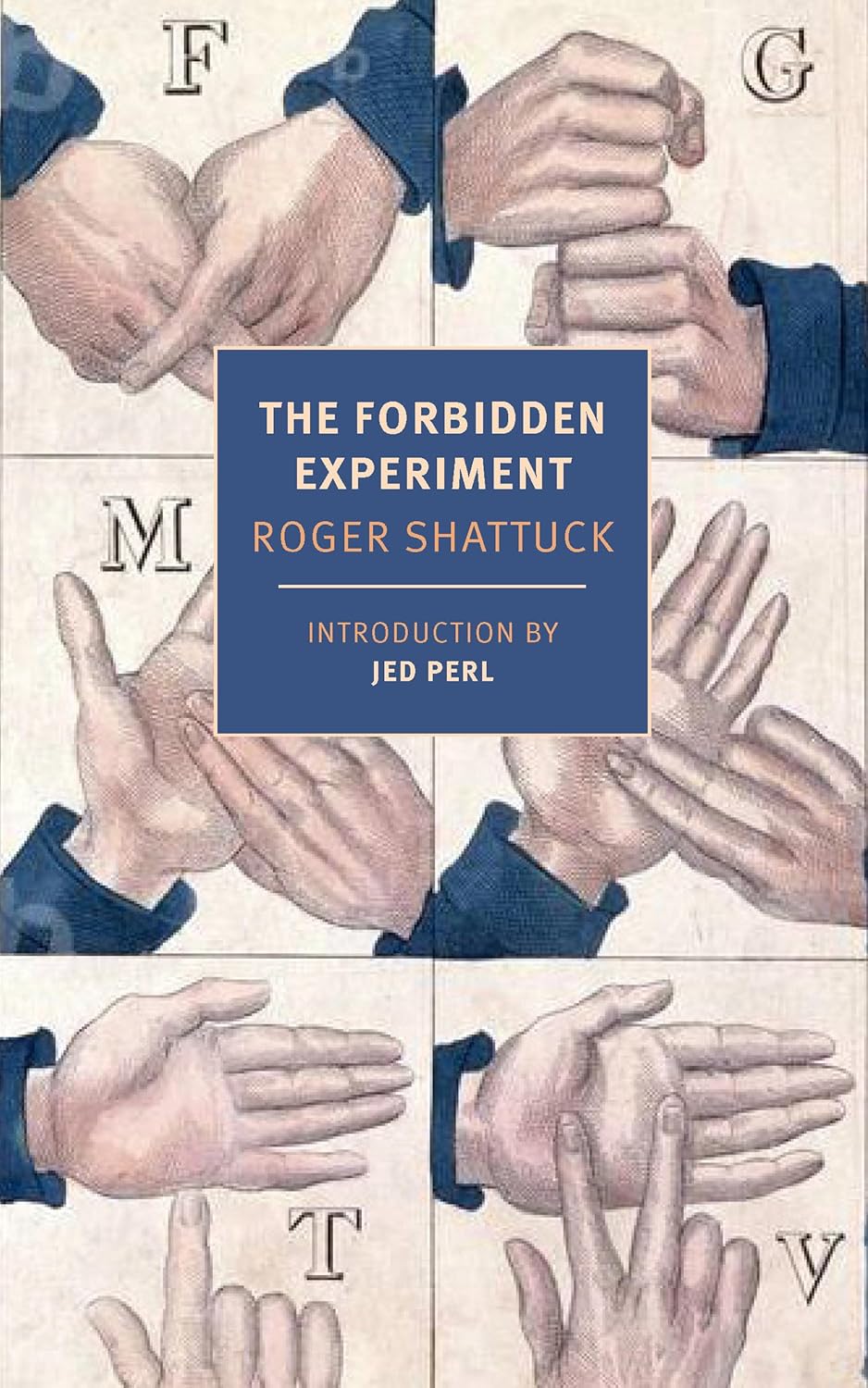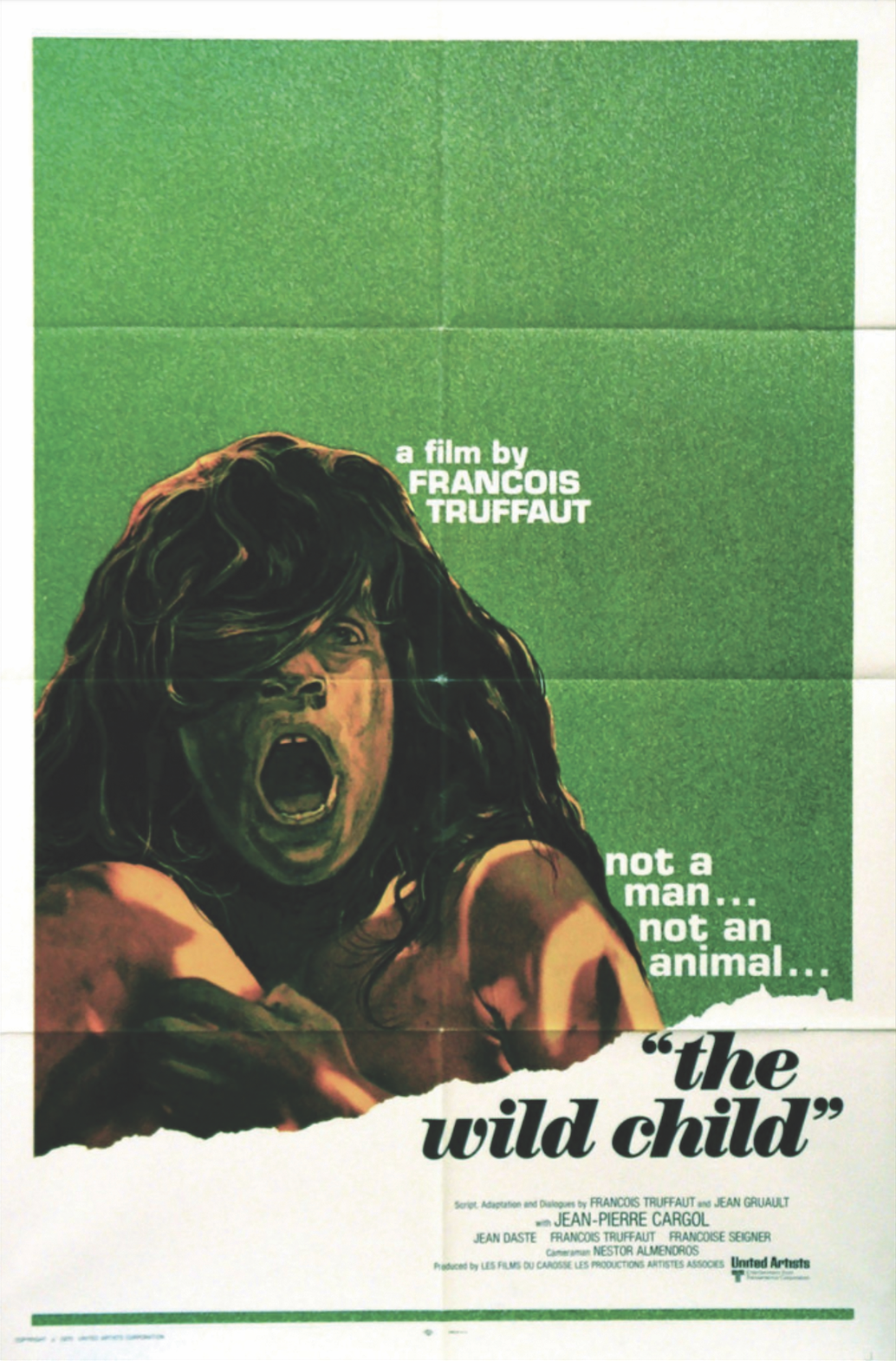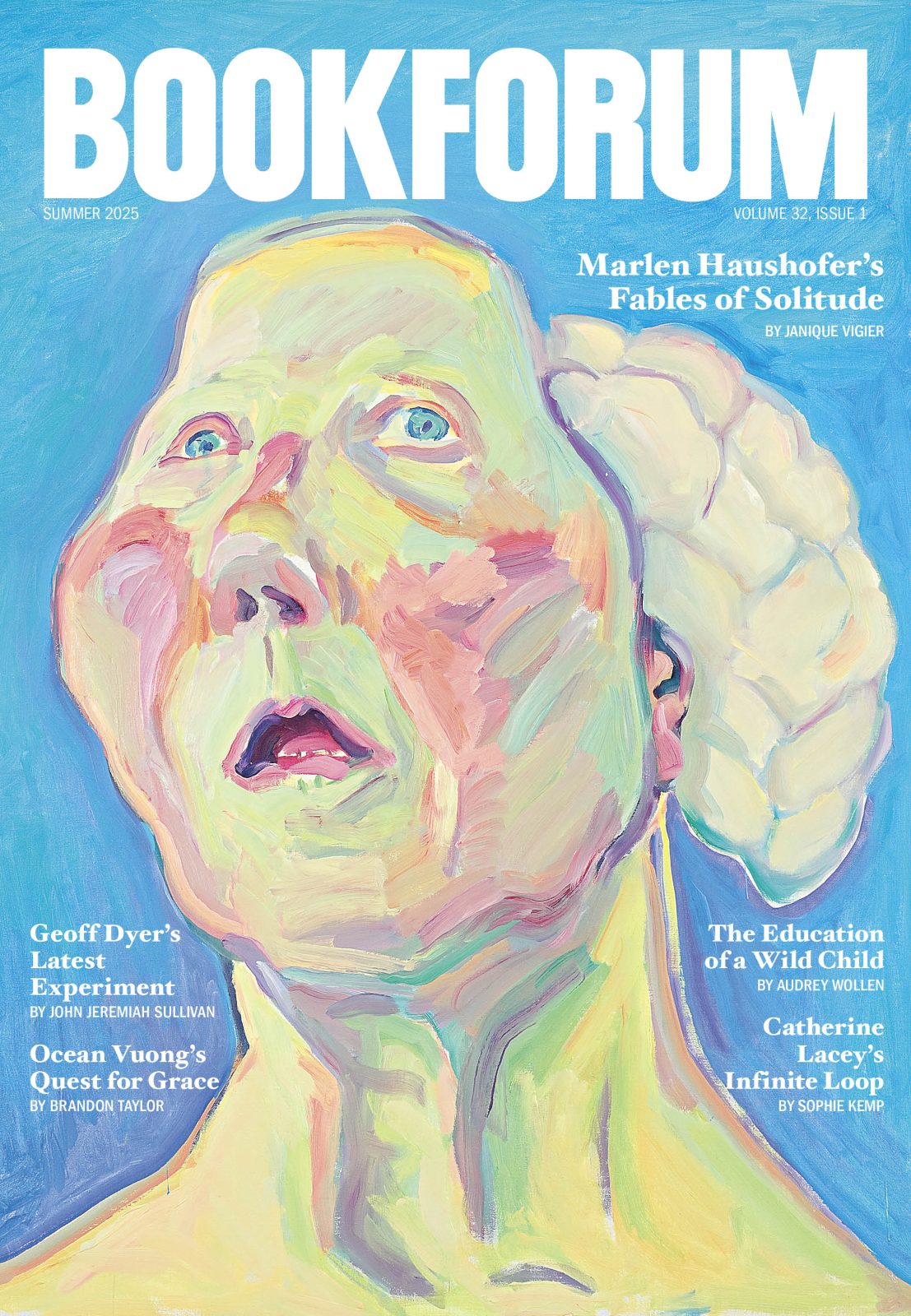
Before dawn on January 9, 1800, a young boy emerged from the bare winter forests that surrounded a small village in southern France. A local caught him pulling out vegetables from a terraced back garden, naked except for the tatters of what was once a shirt. He was hungry, dirty, self-assured, and silent. The thick snow was neutral to the child; he did not shiver. Captured by the villagers—for his own protection and for observation, a fascinating specimen of wildness—he allowed himself to be hugged. Later, it would be discovered, through interviewing the peasant residents of the surrounding villages, that he had been surviving, alone, in the forests of the area for at least three years, probably longer. He looked around eleven years old. In François Truffaut’s 1970 film, L’Enfant Sauvage, which otherwise hews remarkably close to real events, the boy is discovered, growling like an animal, in the summertime. I imagine this seasonal nudge is to provide Truffaut (and his cinematographer, the master of natural light, Néstor Almendros) with the admittedly beautiful wide shots of the wind-alive trees, striated sunshine furtive and winking. Almendros’s distant frames—zooming in from an opposite hilltop—show an immersive, unrestrained landscape. The tiny human boy is easily missed as he runs across the image like a glitch, slightly alien on all fours, catching the light with the unlikely texture of his furless skin. It might have been dangerous to put the child nonactor, Jean-Pierre Cargol, who plays the eponymous enfant, naked in the snow. But this is a crucial detail in the real story, which follows the education of the boy, who would eventually go by Victor. If he could not feel the cold, what could he feel?
Two years after the release of L’Enfant Sauvage, Roger Shattuck, a literary scholar and Proust expert, was recruited for the National Humanities Faculty, a government-funded effort to improve humanities programs in American high schools, which invited university-level professors to collaborate with local teachers on a short curriculum. Shattuck was part of “The Question of Authority Project.” He would screen Truffaut’s film and lecture about the two people who inspired it: Victor, “the Wild Boy of Aveyron,” and his teacher, Jean Itard, the young, audacious doctor who believed he could drag the languageless child into ordinary society. Ultimately, this culminated in Shattuck’s book The Forbidden Experiment, first published in 1980 and reissued by New York Review Books this summer, which is grounded in his translations of Itard’s psychological reports. Shattuck was well-situated to bring the already-famous story into English; he approaches Itard’s accounts primarily as narrative text, always cognizant of the cultural and historical forces that influenced them, yet remaining attuned to the deep yearning interred in their formality. The subtle tautology at play—the state-endorsed attempt to bring “the humanities” to young people providing the container for the retelling of the state-endorsed attempt to bring “humanity” to a young person—emphasizes the fundamental instability of these concepts. Shattuck recalls that, when hearing about Victor, adults want to know “how he turned out,” children want to know what he was “really like,” and teenagers, close to Victor’s age, want to know, “What right did anyone have to capture him?” The tender “of” between Question and Authority flares pink, blushing at our inquisitive touch.
The “experiment” of Shattuck’s title is not Itard’s exploratory effort to teach Victor to speak, read, share food, wear clothes, and acknowledge others, but the forbidden conditions in which Victor grew up—the very fact of him. What remains when a child is exiled from any familial structure and stripped of care, communication, and social norms? We can only begin to answer that question at the site of a tragedy. Shattuck writes of the enduring, cross-cultural obsession with the possibility of a feral human, the mythic baby raised by wolves—a beastly innocent who would finally draw the line between nature and culture. Intellectuals across centuries have been preoccupied by the question of what language a feral child might speak, if they could speak at all: Was there a motherless tongue, built-in? This line of investigation has always been politically (as well as ethically) suspect; King James IV of Scotland, for example, sent a couple of babies to live with a deaf-mute woman on an island in 1493, and luckily, they came back speaking “very good Hebrew,” evidence that the Scottish people were biblically ancient. But no king sent Victor into the woods. On the first page, Shattuck describes Victor as having “survived on the outer edges of humanity in a state of something like moral weightlessness,” but of course, Victor floated above and around social concepts (like that of right and wrong) only because someone failed to parent him, a plunge into harm so deep that it obliterated its own category. This fantasy—that the criminally neglected child will discover a godly language inside his own empty stomach—betrays a buried anxiety: Would we speak without anyone to talk to? If my parent leaves me, will I still exist? No one seems that bothered with what the surviving child would actually say,after having returned, fluent in their own experience of abandonment and cruelty.
Perhaps because of this abiding unease and allure, teaching Victor to talk—not communicate, but talk—became Itard’s personal challenge, his pedagogical fixation. Contradicting the diagnoses of more established experts of the era, such as Abbé Sicard, a pioneer of sign language, and Philippe Pinel, the godfather of modern psychiatry, the upstart Itard believed that Victor, although silent and strange, was not deaf, mute, or an “idiot,” a broad historical term that encompassed most people who were developmentally or intellectually disabled. Itard radically maintained that Victor was not “an incurable imbecile, but on the contrary, an interesting being who deserves careful observation and special care.” It was clear that Victor had shut down large swaths of his sensory awareness, rarely tuning into signals that didn’t directly apply to food or sleep. He would put his hand into an open flame to grab a cooking potato, unflinching. Sometimes, he seemed like a basic survival machine, numb to any other motivations, but other times, he would sit quietly in the garden when it rained heavily, as if for the pleasure of getting soaked, or climb out of bed when the moonlight came brightly through the window, standing for hours “in a kind of ecstatic contemplation.” Inner life glimmered. With the help of their housekeeper, Madame Guerin, who mothered Victor for the rest of his life, Itard began darning the threadbare connection between Victor’s body and the world around him.
Itard hypothesized that before one could piece together signs, a sensitivity to the referent, the real world, must be developed. They started with hot baths, for two or three hours a day, to which Victor responded with “wonder and playfulness.” Enjoying the bath provoked a new “aversion to cold”—must we know happiness to register its opposite?—which helped Victor learn to wear clothes. Madame Guerin and Itard gave Victor vigorous daily massages, as if physically pulling him back into relationship with other human beings. Language acquisition, however delayed, starts as a somatic activity. Speech and symbol stay bodily, drawing from the well of every accumulated touch as we exhale our eidolic sentences or arrange our letter shapes as eager stand-ins. There are moments when Victor’s awe at his own ability to feel overwhelms him. Itard writes, “If one got him to push or carry something, even something very light, he sometimes stopped suddenly and looked at the tips of his fingers. They could not possibly have been hurt or bruised, yet he would tuck them carefully inside his shirt.” The hand contains the whole world, and the world is new and hard. In describing this process, Shattuck taught me a word I had never encountered before, helpfully including the dictionary definition: “Coenesthesia, n. The general sense of existence arising from the sum of bodily impressions.” The knowingness of being flesh—our first kind of literacy.
Victor made remarkable progress in a short time under Itard’s daily tutelage and Madame Guerin’s unwavering care. But speech remained elusive. Shattuck appropriately expresses frustration at Itard’s odd refusal to teach Victor sign language, especially given that their makeshift family unit lived and worked at the Institute of Deaf-Mutes, where signing was practically the lingua franca, and Victor had independently figured out an “action language,” where he communicated needs through gesture. Itard resembles many figures of the intellectual avant-garde Shattuck has written about: he seems both extraordinarily forward-thinking, able to see through his era’s inherited concepts of disability and deservingness, and also deeply limited, caught up in standards and expectations that read, with two hundred years hindsight, as narrow and wasteful. In his own reflections, Itard acknowledges that Victor’s vocal cords, while showing no apparent defect, might have atrophied over years (perhaps a lifetime) of silence, observing that it takes “eighteen months of careful education before an infant stammers out a few words,” a feat that is enabled by “an innate tendency to imitate; great flexibility and sensitivity in all his organs; constant mobility of the tongue; and a larynx still of an almost gelatinous consistency.” Victor had none of these things. “Even crying helps,” Itard comments, the beseeching vocal warm-ups of the choral newborn. Victor did not cry. Why would he? For so long, there had been no one near to hear him.

And yet, against all odds, a word: lait, for milk. When Victor said it, I let out a yelp of triumph. I wrote “!!!” in the margin. The small miracle of utterance, of naming, of code and decoding, of participation and category, of believing others to be present and real, of believing oneself to be. And yet, and yet, Victor’s small step into spoken language is not satisfactory for Itard. Noticing that Victor only said “lait” when milk had already been given to him, happily murmured between gulps, Itard categorizes it as “a useless exclamation of joy,” rather than “the true function of speech,” which Itard frames as a request, an explicit relation between two speakers. He doesn’t use this word, but it seems like he’s searching for “transaction.” But couldn’t the relationship expressed be between Victor and the milk itself, not between Victor and a milk-bestowing authority? Isn’t that a seed from which abstraction—the word for something that isn’t currently in the room, something desired but unseen—might bloom? Itard completely gives up on training Victor’s vocal ability and transitions to written language. He invents a system of handy metal letters to teach the alphabet, a method that is still used in Montessori schools today. Again, after much work, a miracle: Victor surreptitiously pockets the L, A, I, and T, and brings them with him to a friend’s house they frequent. When he arrives, he spells LAIT on the table. He would like some milk, please.
Tragically, exasperatingly, this remains insufficient for Itard. He records that Victor only associates the letters l-a-i-t with the habit of receiving milk in specific circumstances, a kind of reverse Pavlovian response. He might be ringing his own bell, but it is the force of routine that causes the associative salivation. Victor does not refer to milk at any other time but milk-time. Shattuck explains that, in Itard’s analysis, “what lait referred to for Victor was extremely imprecise. Clearly it did not mean ‘white liquid produced by a female mammal, anywhere, anytime.’ His behavior suggested something closer to: ‘my pleasure in drinking this white water, right here, right now.’” But the extreme pedagogical environment that produced this behavior in Victor relied heavily on standardized days, strict expectations, pattern recognition. He wasn’t given much opportunity to improvise with uncertain futures. More importantly, Victor developed intricate emotional bonds with Itard and Guerin, attesting to his growing understanding of nuance, symbol, and change. One of Victor’s daily tasks was to set the table for meals with Madame Guerin and her husband. A few years into their time together, Monsieur Guerin fell ill. Every day, Victor would set his place at the table, and Madame Guerin would put the setting away. On the day Monsieur Guerin died, Victor did as he always did. Seeing the permanently empty seat at their kitchen table, Madame Guerin had “an outpouring of grief.” Victor “understood that he had somehow brought it on. . . . Of his own accord, he removed the place setting, put everything back in the cupboard, and never set it again.”
Although Victor was eventually able to write rudimentary sentences, his measurable progress plateaued after about five years. Truffaut’s L’Enfant Sauvage cuts off early, ending on an optimistic note, just as it begins in the false warmth of summer. Itard abandons hope of ever teaching Victor to speak, turning him over to Madame Guerin’s lifelong care, abdicating further responsibility, and declaring the project a failure. Guerin and Victor moved to “a dead-end street on the outskirts of Paris,” receiving a small fee from the state for Guerin’s labor as foster mother. In the neighborhood, Victor’s name reverted back to “the Savage.” He died there at forty, of unknown cause. His legacy, however, echoes through many lives: Itard’s methods with Victor (and Victor’s incredible responsiveness) inspired Édouard Séguin, one of the “founding fathers of special education” in France and the United States, as well as Maria Montessori, who emphasized motor skills and sensory awareness in her theories of early education.
Over the past two hundred years, countless psychiatrists, psychoanalysts, and child-development experts have used Itard’s reports to hypothesize about Victor and his potential diagnoses, which Shattuck condenses into useful discursive signposts but rarely dwells on longer than a paragraph. Most mimic Itard’s fundamental problem: they imagine Victor as a kind of absence, a blank mind that went too long un-inscribed. Even if one operates from a tabula rasa theory of the self—a person is born with nothing inherent to them, knowledge is only accumulated through experience—Victor’s years of unlikely survival in the forest were an experience, just as real as his five years with Itard. Undeniably, human beings are genetically designed to flourish through social bonds and stimuli; without them, vast fields of our cognitive ability lie fallow. But remember the moon, the way Victor would stand and stare at it—did it stare back? Is there a modest form of sociality buried in that reflection, actualized only by those in a dire state of loneliness? By the end, the only psychological interpretation that really hung onto me was a glancing conjecture by Lacanian psychoanalyst Octave Mannoni. Shattuck glosses, already dismissive: Mannoni “does not really attempt a diagnosis but shakes his finger at everyone else who has . . . [he] proposes that Sicard and Pinel and everyone else would have changed their opinion of the boy’s mental capacities if they had taken him out into the woods and tried to live there for a while with him. That way they could have found out what he really knew.” A prodigy, we might have called him.
Audrey Wollen is a writer in New York.
